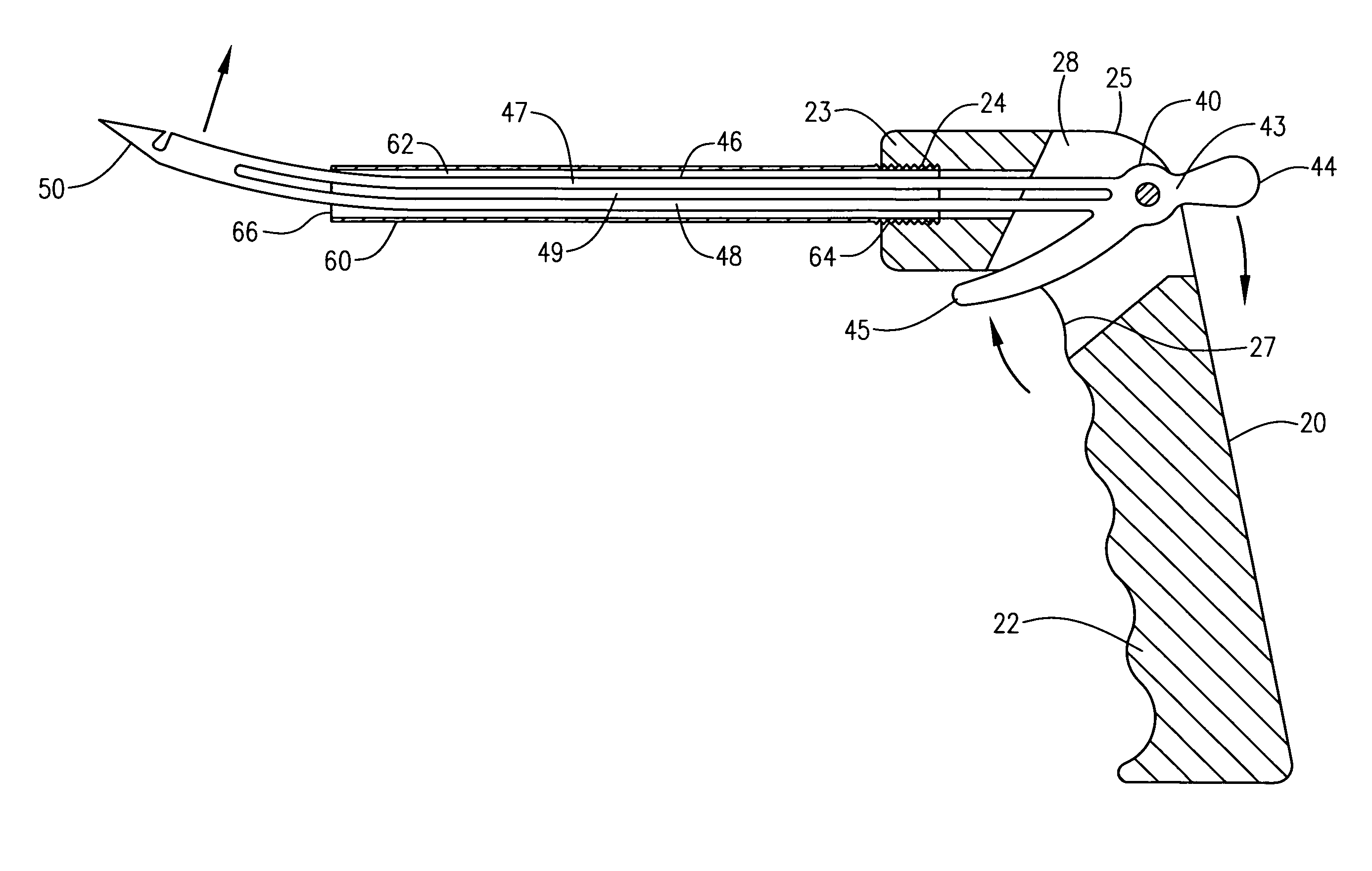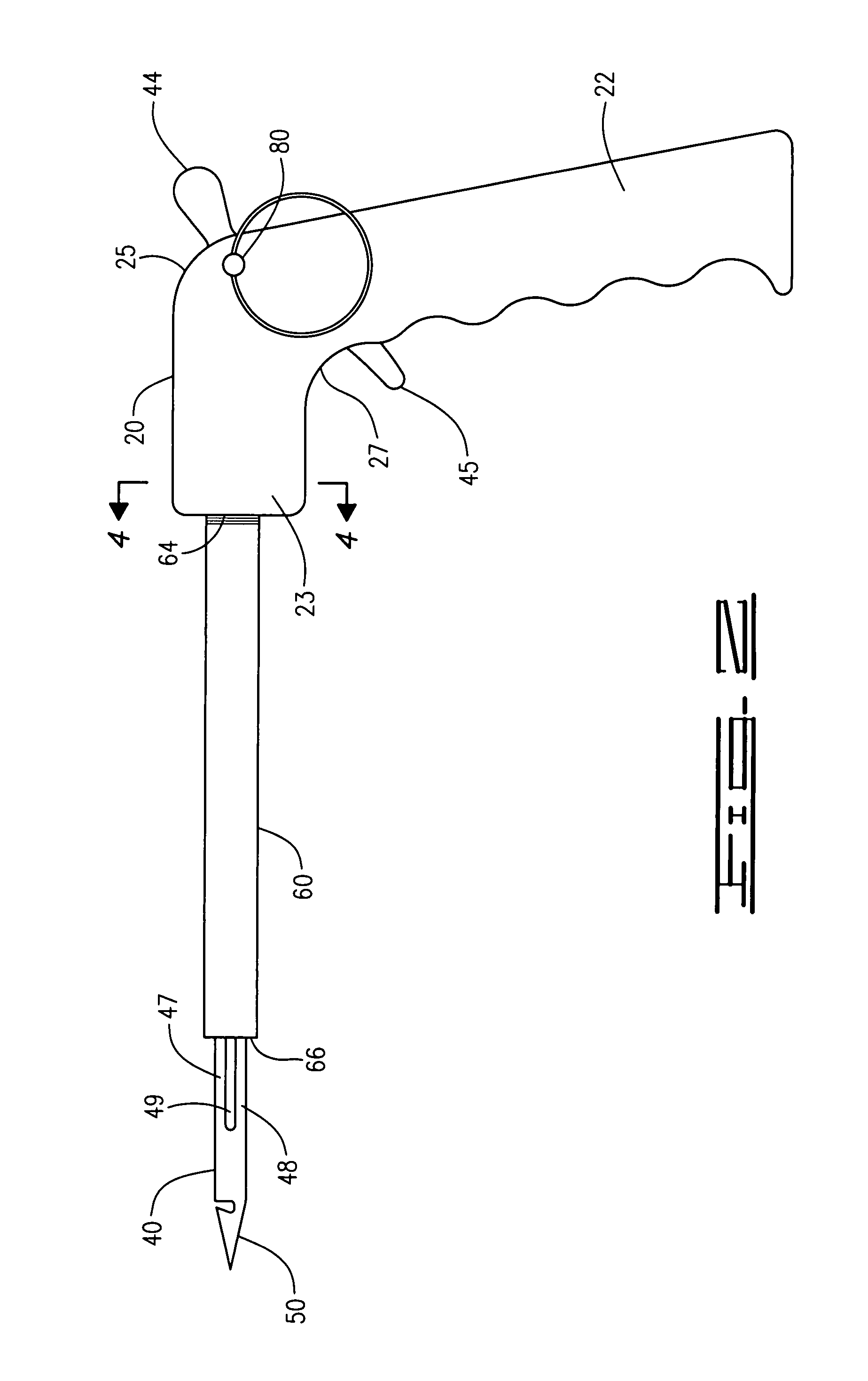Steerable suture instrument
a technology of surgical sutures and instruments, applied in the field of surgical sutures, can solve the problems of long recovery period, difficult to achieve using a rigid and straight instrument, and risk of permanent injury to surrounding tissues, and achieve the effect of prolonging the recovery period
- Summary
- Abstract
- Description
- Claims
- Application Information
AI Technical Summary
Benefits of technology
Problems solved by technology
Method used
Image
Examples
Embodiment Construction
[0025]A single hand held and operational surgical instrument having a steerable, bi-directionally active capability is disclosed allowing a surgeon to insert the operation end 50 or instrument tip through soft tissue in a non-linear pathway, reducing the amount of damage to collateral tissues during the course of the surgical procedure. The instrument may be presented in any number of embodiments having a variety of surgical penetrating instruments formed or attached to an operational end of the instrument, but for purposes of the present disclosed embodiment, the operational end 50 is a suture passer instrument.
[0026]Thus, the steerable surgical instrument 10, as represented and illustrated in FIGS. 1-7B of the drawings, defines a simple assembly of four components, including a handle 20, a resilient transactional member 40, an extension tube 60 and lock pin 80 which may be readily joined and assembled and disassembled for application and for cleaning, with the transactional member...
PUM
 Login to View More
Login to View More Abstract
Description
Claims
Application Information
 Login to View More
Login to View More - R&D
- Intellectual Property
- Life Sciences
- Materials
- Tech Scout
- Unparalleled Data Quality
- Higher Quality Content
- 60% Fewer Hallucinations
Browse by: Latest US Patents, China's latest patents, Technical Efficacy Thesaurus, Application Domain, Technology Topic, Popular Technical Reports.
© 2025 PatSnap. All rights reserved.Legal|Privacy policy|Modern Slavery Act Transparency Statement|Sitemap|About US| Contact US: help@patsnap.com



